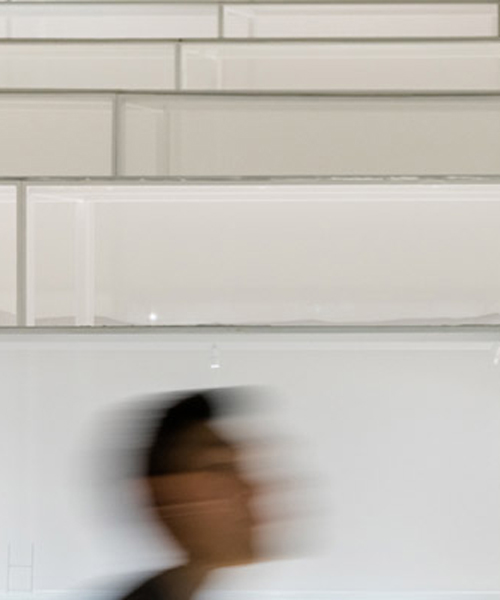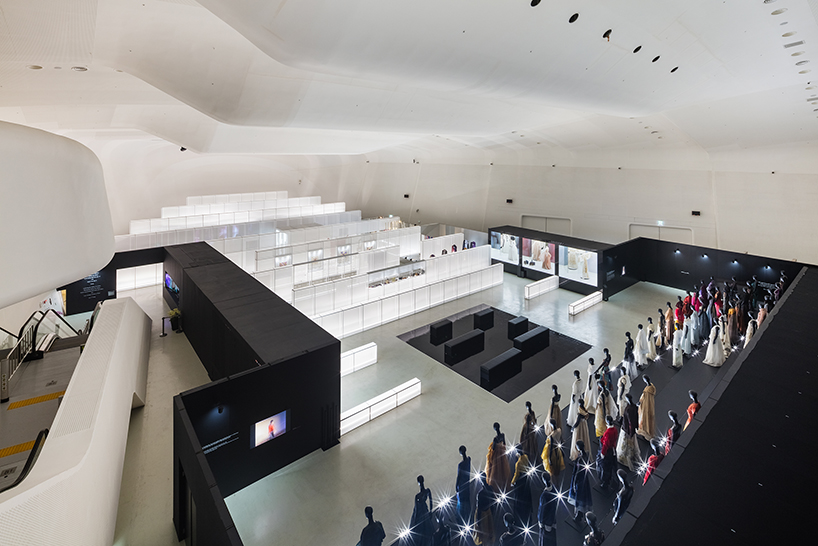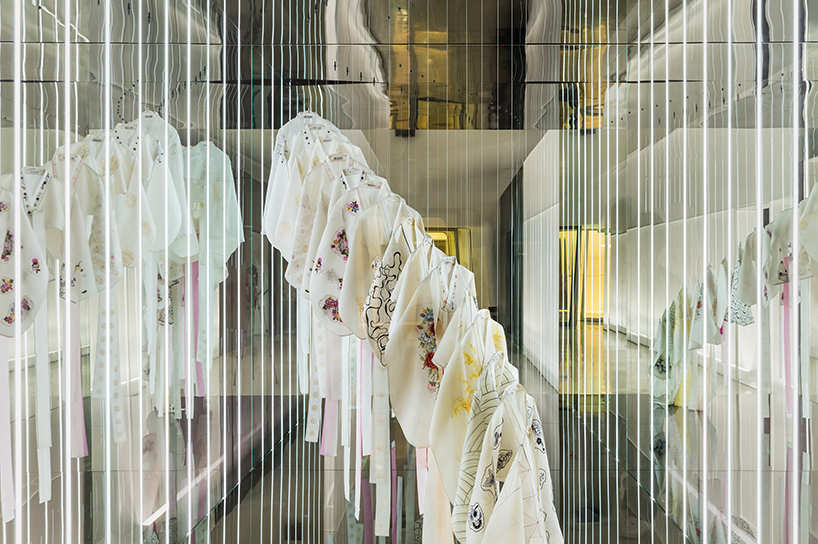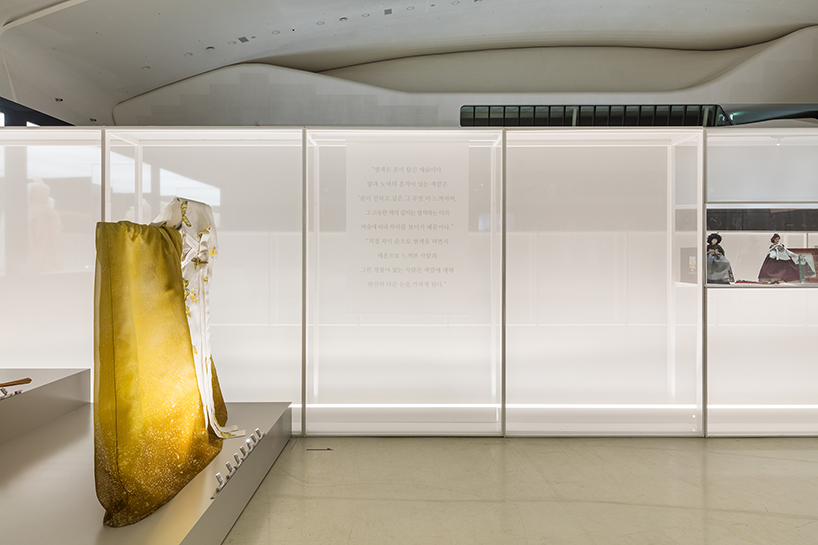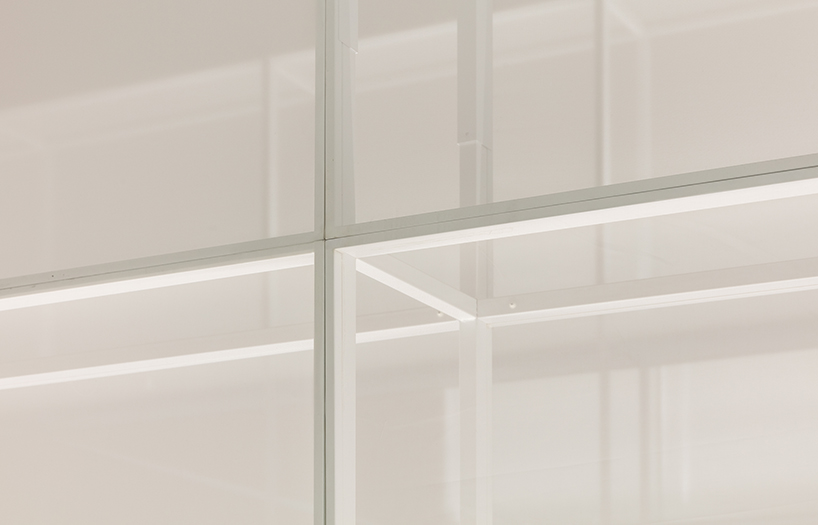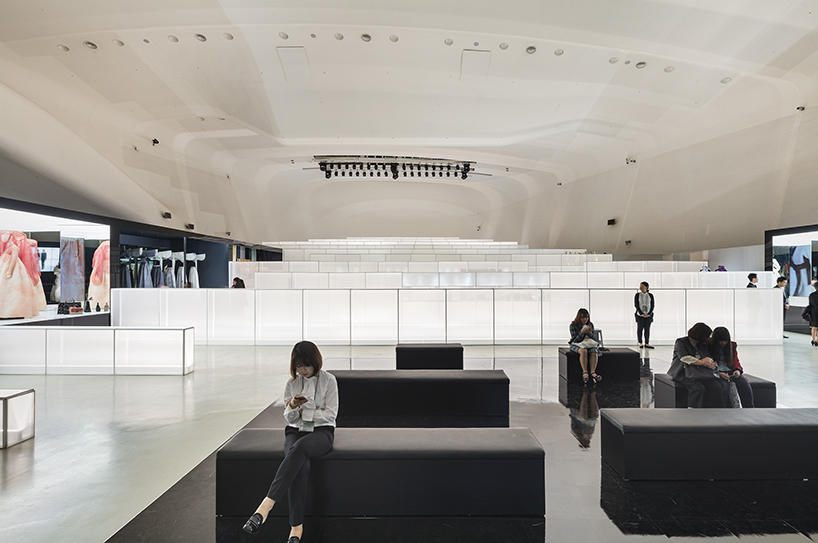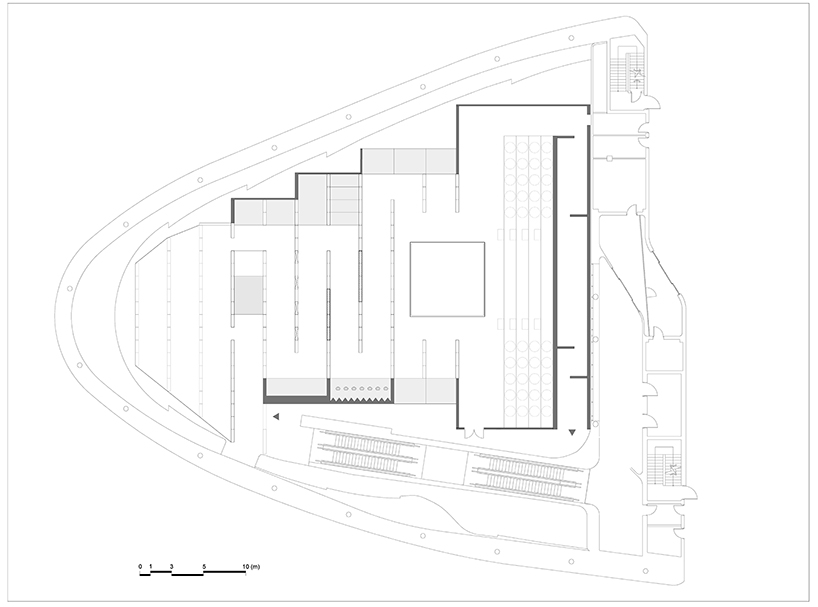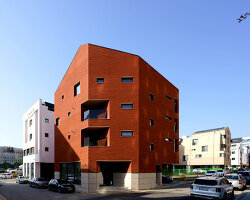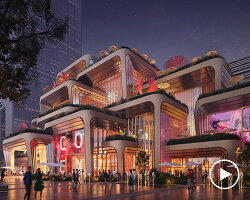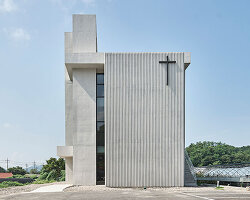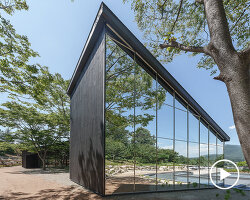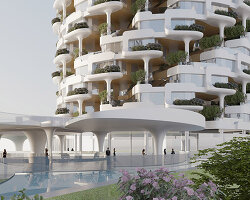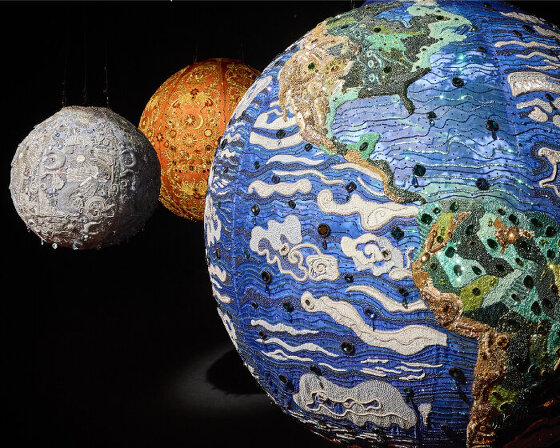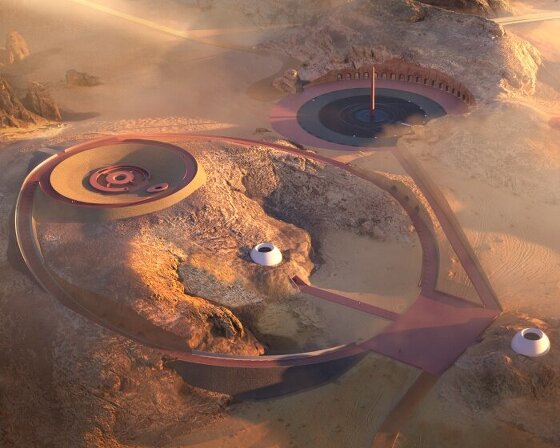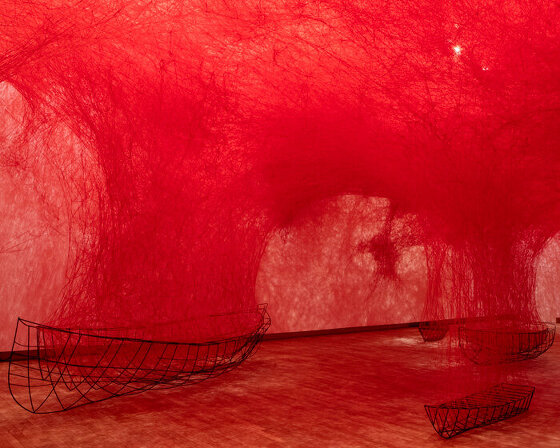the founder of farming architecture choi jangwon was put in charge of designing the exhibition space for a special display taken place in south korea. entitled ‘baram-baraem’, by the celebrated ‘hanbok’ designer lee younghee, the exhibition space captures the unique qualities of the ‘hanbok’. the central feature of the special display for expressing the beauty of this traditional korean dress, as envisioned, were the double layered semi-translucent silken ‘walls’. this highlight simulated the fog and clouds that hang over the scenic landscape of korea.
overlooking the exhibition space from the second floor
all images © kyungsub shin
korean based farming architecture pictured the ‘hanbok’ as something not only related to clothing, but also as in useful spaces. it seemed fitting for such dynamic and breathing garments to form the basis of the exhibition design for people to walk through. the concept of the ‘hanbok’ was no longer confined to wearers but formed the surrounding exhibition space and filled it with flexible and free-flowing beauty.
view through the semi-translucent wall that simulates the korean foggy landscape
the ‘hanok’, traditional korean houses, serve as spaces across which various activities can flow seamlessly. these korean features, such as the ‘hanbok’ and the ‘hanok’ open structures that admit ample wind and sunlight so that wearer and inhabitant can fully experience the flexibility and changes of the seasons. the delicate silken ‘walls’ designed for the exhibition space are made of a similar fabric used for the ‘hanbok’ skirt. visitors are allowed to glide in between them, setting a perfect backdrop for the variety of garments and pieces on display. just as the traditional korean dress which creates a natural space between itself and the body of the wearer, these organza walls invite visitors to truly feel and enjoy a sense of the roominess and flexibility of the garments.
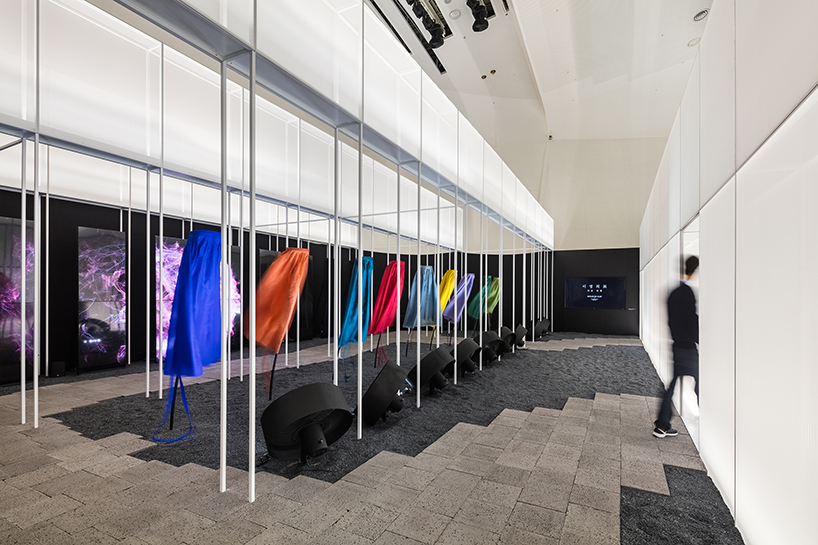
section 1 showcases the ‘costume of wind’
the labyrinthine route designed for visitors to take resembled the natural creases in the ‘hanbok’, naturally inviting multiple perspectives as visitors traversed the translucent organza-lined pathways, which gradually grew shorter toward the end. the ‘hanbok’ on display were sorted and arranged according to color, shape, material, and translucence. neutral colors, such as grey and charcoal, were important elements of this space to convey the flexibility of the dress. the semi-translucent walls caught a wide range of colors according to the changes and directions of light to reflect the wide spectrum of colors of natural-dyed ‘hanbok’ fabrics.
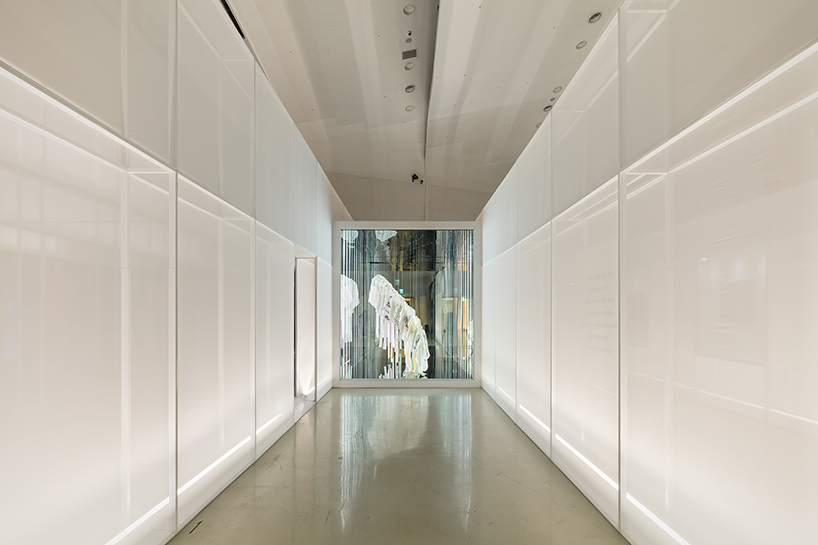
space between the delicate silken walls
when naked, I become one with nature. when clothed, I become part of culture. it is the dream of owning both nature and culture that makes me wear the clothes of wind. – lee oyoung
the spaces, folds, and translucence in between the layers of fabrics that make up ‘hanbok’ reflect the wisdom of past generations of koreans who sought to emulate nature. the paths throughout the exhibition space provide a panorama of the history of this remarkable traditional dress.
section 2 showcases a series of ‘jeogori’ from the 1980s
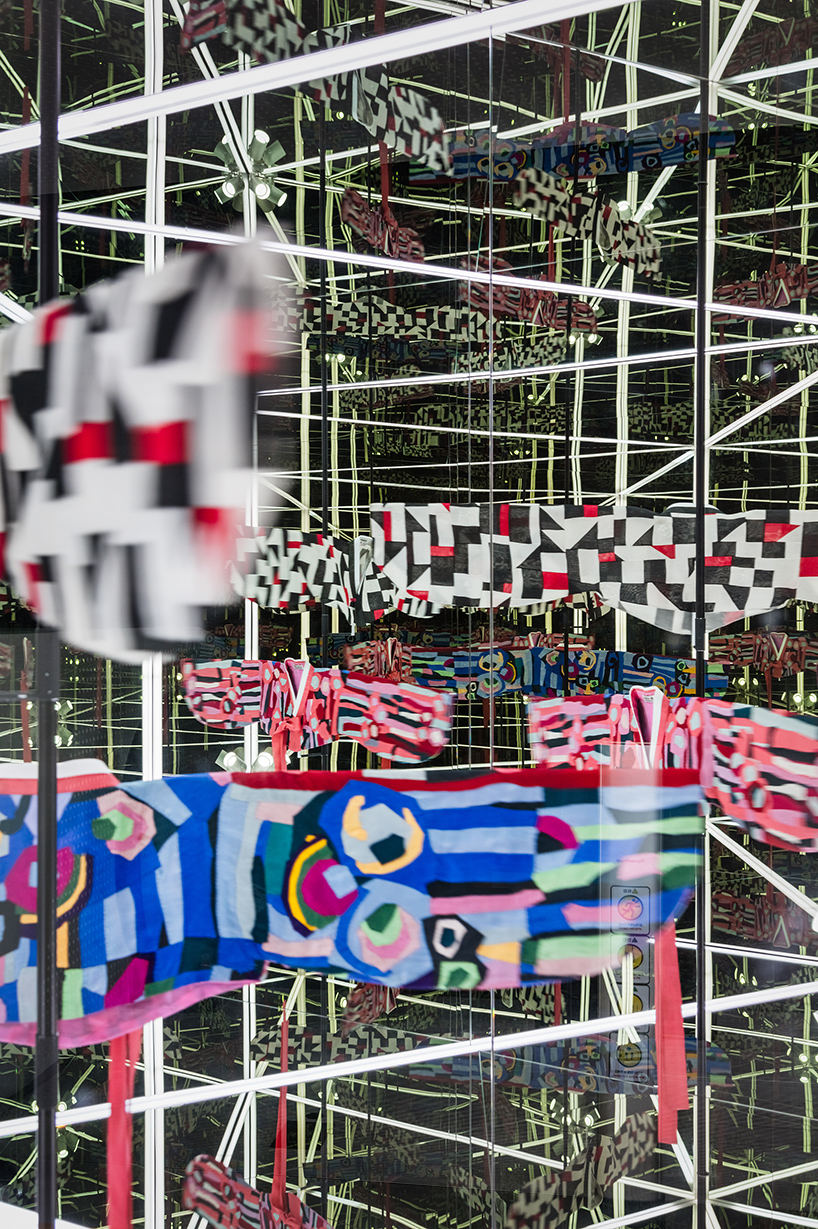
‘jeogori’ displayed in a kaleidoscope exhibition space
a traditional ‘hanbok’ exhibition and poem is being portrayed in the semi-translucent wall

exhibition path between the delicate silken walls
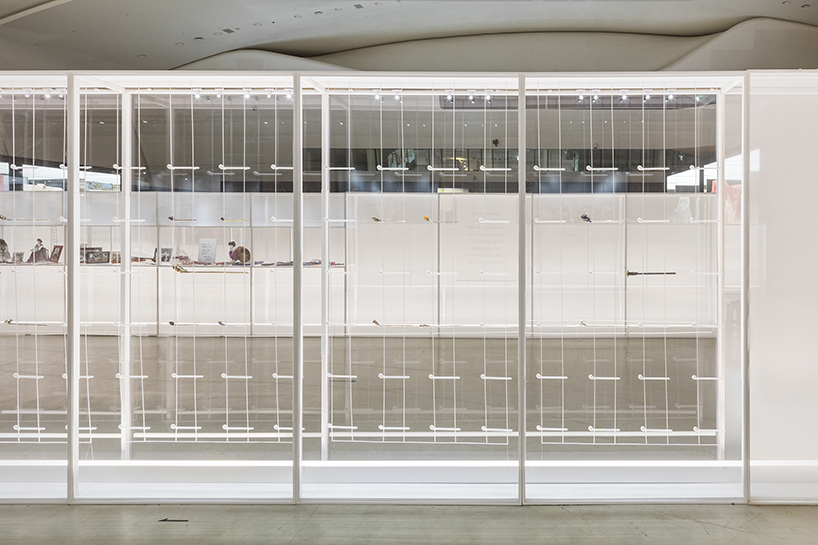
this wall display exhibits a series of ‘binyeo’, a korean traditional ornamental hairpin
structure of the double layered semi-translucent organza
the exhibition space resembles the mountain’s silhouette viewing from the main stage
‘baram-baraem’ exhibition plan
designboom has received this project from our ‘DIY submissions‘ feature, where we welcome our readers to submit their own work for publication. see more project submissions from our readers here.
edited by: apostolos costarangos | designboom
